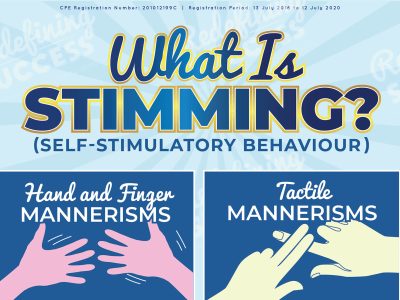What is Stimming?
Self-stimulatory behavior also known as stimming, is repetitive or unusual body movements and/or noises. Most people tend to stim, for example, it may be that they play with their hair while talking to a friend or cracking their knuckles before a task. However, when stimming interferes with everyday activities and learning,...









